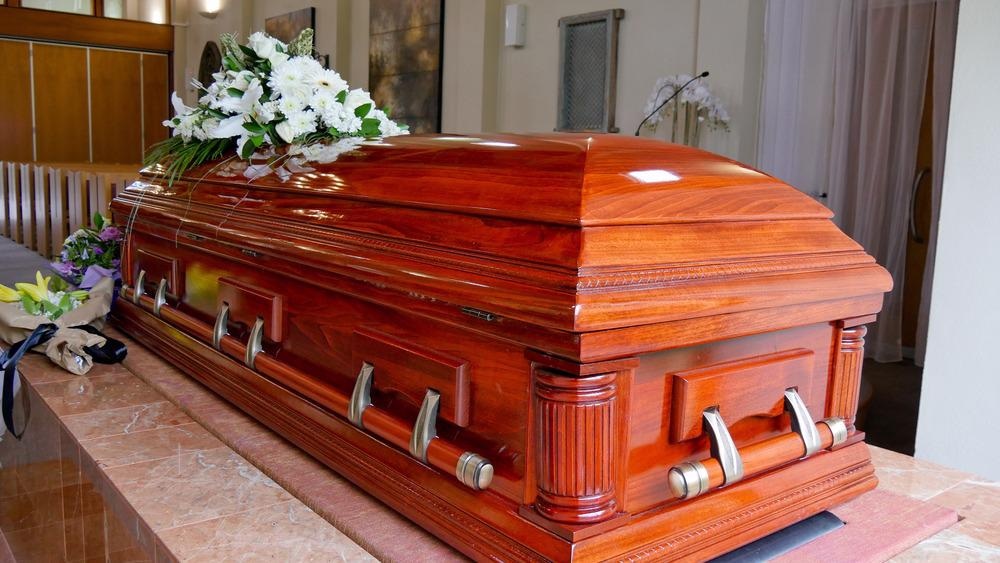Cremation overtook traditional casket burials as the most popular choice for funerals in the US in 2015 and it has been increasing in popularity ever since. By 2040, it is expected that around 80% of people will choose cremation over burials.

Image Credit: NKM999/Shutterstock.com
While the increased popularity of cremation is considered to be, at least in part, related its the perceived environmental friendliness over casket burials, cremation, in fact, has a considerable carbon footprint. An average cremation, for example, uses the same amount of energy and releases the same levels of emissions as burning the fuel of two tanks of an average car.
Scientists are exploring ways to develop new, eco-friendly alternatives to casket burials and cremations. We discuss some of the options below.
Woodland burials/natural burials
Traditional burials are harmful to the environment due to the toxic embalming fluid used to preserve the bodies that eventually ends up seeping into the land. Often, drugs such as those used to treat disease and illness which often precedes death also leach out as the body biodegrades. Additionally, hardwood coffins or concrete vaults are used, which put a demand on resources. Finally, traditional burials take up space, which is becoming greatly competed for as the population grows.
Woodland burials and natural burials overcome the environmental challenges of traditional burials. Rather than taking up space with a headstone, the body is buried beneath a tree in a biodegradable casket so that the degradation process can feed the woodland. Also, embalming is generally not undertaken for woodland burials and natural burials, saving toxic chemicals from entering ecosystems.
Alkaline hydrolysis (resomation, natural water cremation)
One of the most interesting and increasingly popular alternative options is alkaline hydrolysis, also known as natural water cremation or resomation. The method has been used in the US since the mid-1990s and is becoming increasingly popular although it is not legal in all states. Originally, the process was developed to dispose of the bodies of cows amid the foot-and-mouth epidemic. Since 2008, it has been used to process the bodies of people, since Dr. Dean Fisher of the University of California began using it to manage the remains of donated medical cadavers once they were no longer needed.
The process uses a water and alkali-based solution to speed up the natural processes that the body usually goes through. Instead of taking many years, alkaline hydrolysis accelerates this timeframe to just 3-4 hours. At the end of the method, white bone ash is returned to the family.
Biodegradable shrouds or coffins are used to carry the body to the chamber, making the process even more environmentally friendly.
While it is a promising eco-friendly alternative to cremation and traditional burial, the public perception of alkaline hydrolysis is acting as a barrier to the widespread adoption of the method. Generally, the public is poorly informed about this environmentally friendly alternative, they are unaware that it is an option or believe it is a waste of water, or believe that their body will be dissolved, which is an unpleasant prospect. In fact, the water used for the process can be used as fertilizer to take advantage of the nutrients, and the true nature of the process is merely a speeding up of natural processes.
To enable the success of alkaline hydrolysis, public perception needs to change. Some experts are positive that a shift in perceptions is imminent. Just as cremation became popular in the late 19th century as people moved away from secularism, alkaline hydrolysis may become popular soon due to increasing awareness of personal carbon footprints and responsibility for the impact we have on the planet. The UK, for example, has around the same number of woodland burial sites as it does crematoria, demonstrating the shift in perceptions already occurring.
Mycoremediation (Mushroom Burial Suit)
Coeico is a company founded by Jae Rhim Lee that produces the Mushroom Burial Suit, a suit designed to biodegrade the body by special mushroom spores that line the suit. The spores absorb and purify the toxic products of the mycoremediation process, leaving the earth cleaner than when the body was buried in it. Finally, it introduces the resultant nutrients of the mycoremediation process into the earth, supporting the surrounding wildlife.
Jae Rhim Lee: My mushroom burial suit
Eternal reefs
Artificial reefs are being developed in more than 70 countries to counteract the impact of global warming on these vital ecosystems. Eternal Reefs incorporate human remains into reef balls that are designed to encourage and support wildlife by creating a healthy environment.
Promession
Promession is a process developed by Swedish biologist Susanne Wiigh-Mäsak that involves free-drying human remains in a vat of liquid nitrogen and disintegrating them by vibrating the vat over several minutes. The dried powder is then returned to the family in the same way that ashes would be returned from a cremation.
Overall, several viable environmentally friendly alternatives to traditional burials and cremations exist, however, public opinion will need to shift before they can overtake the accelerating popularity of cremation.
Further Reading